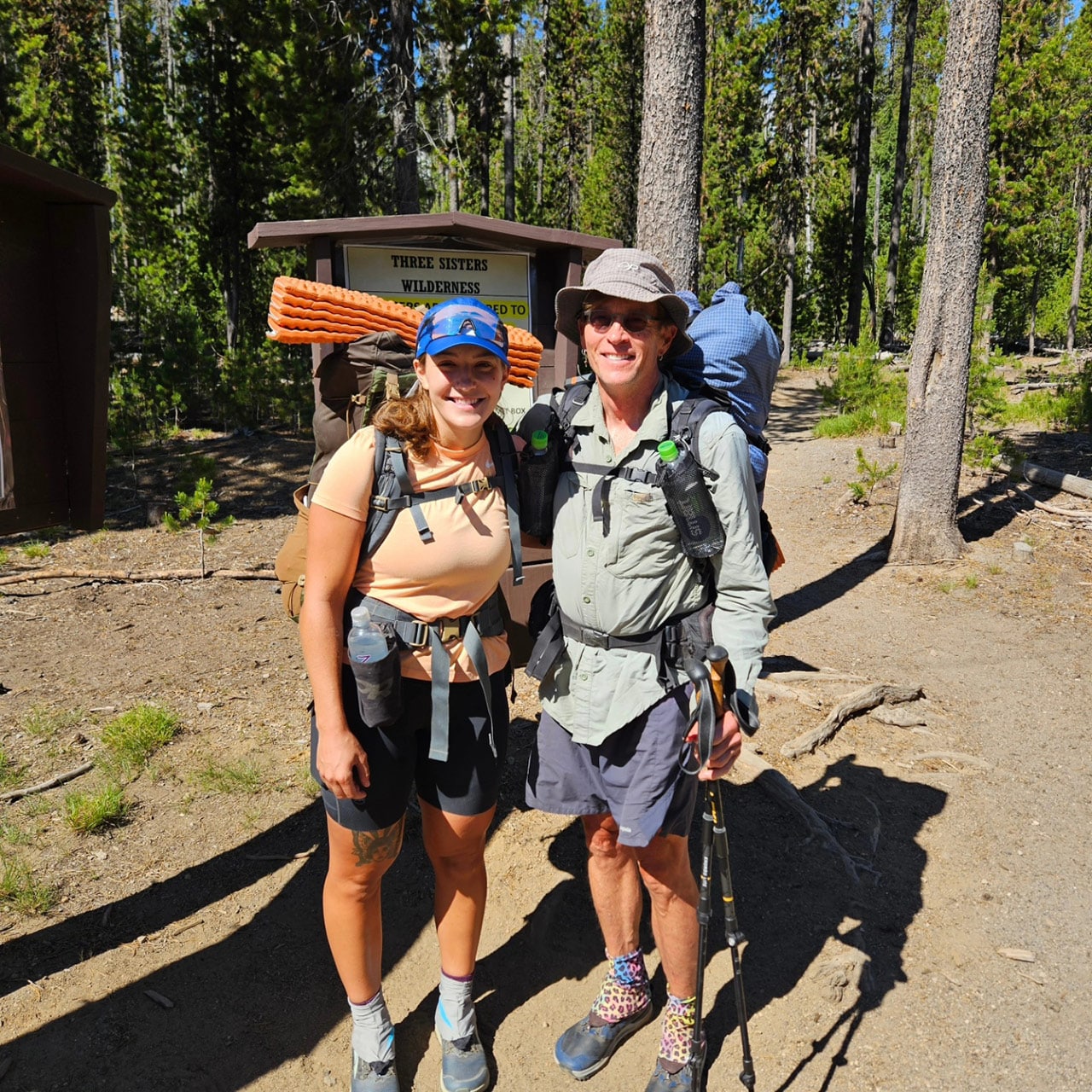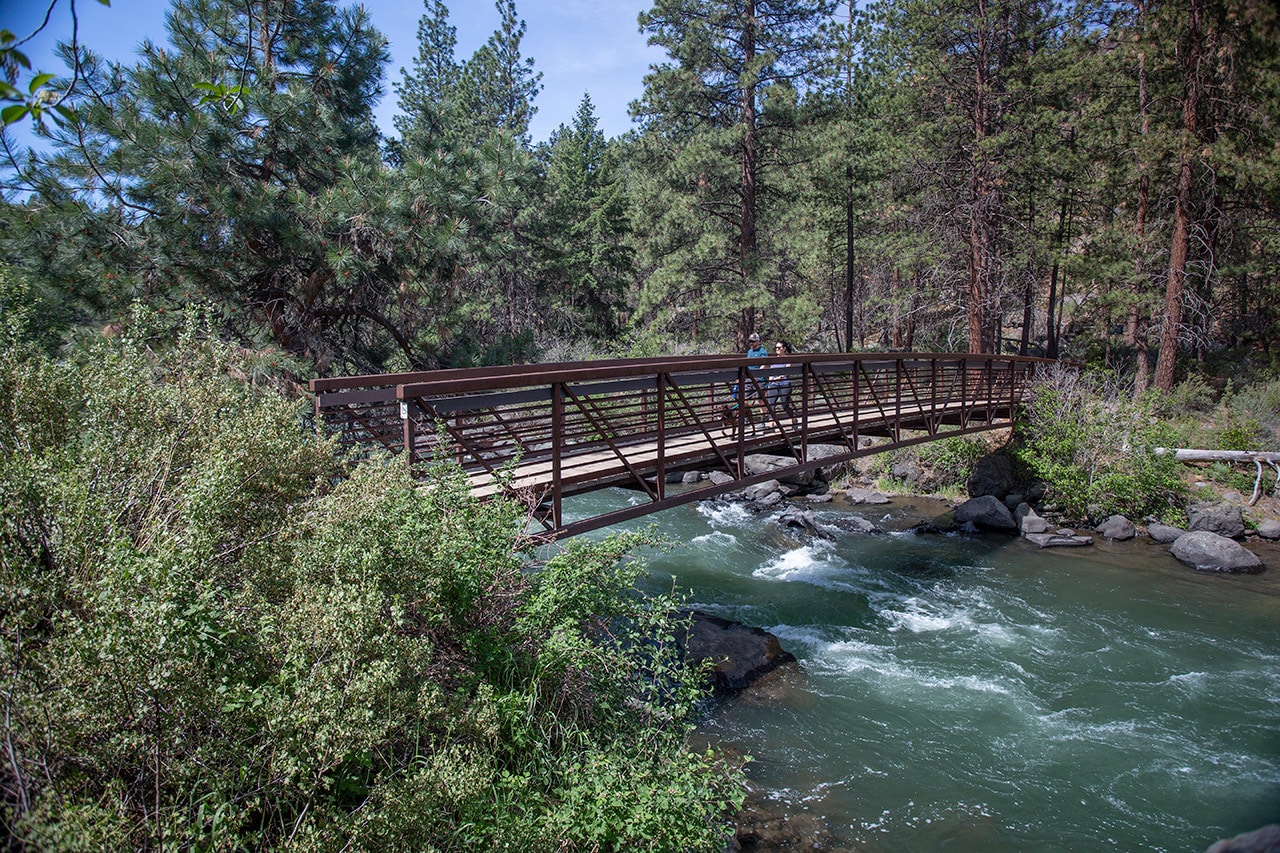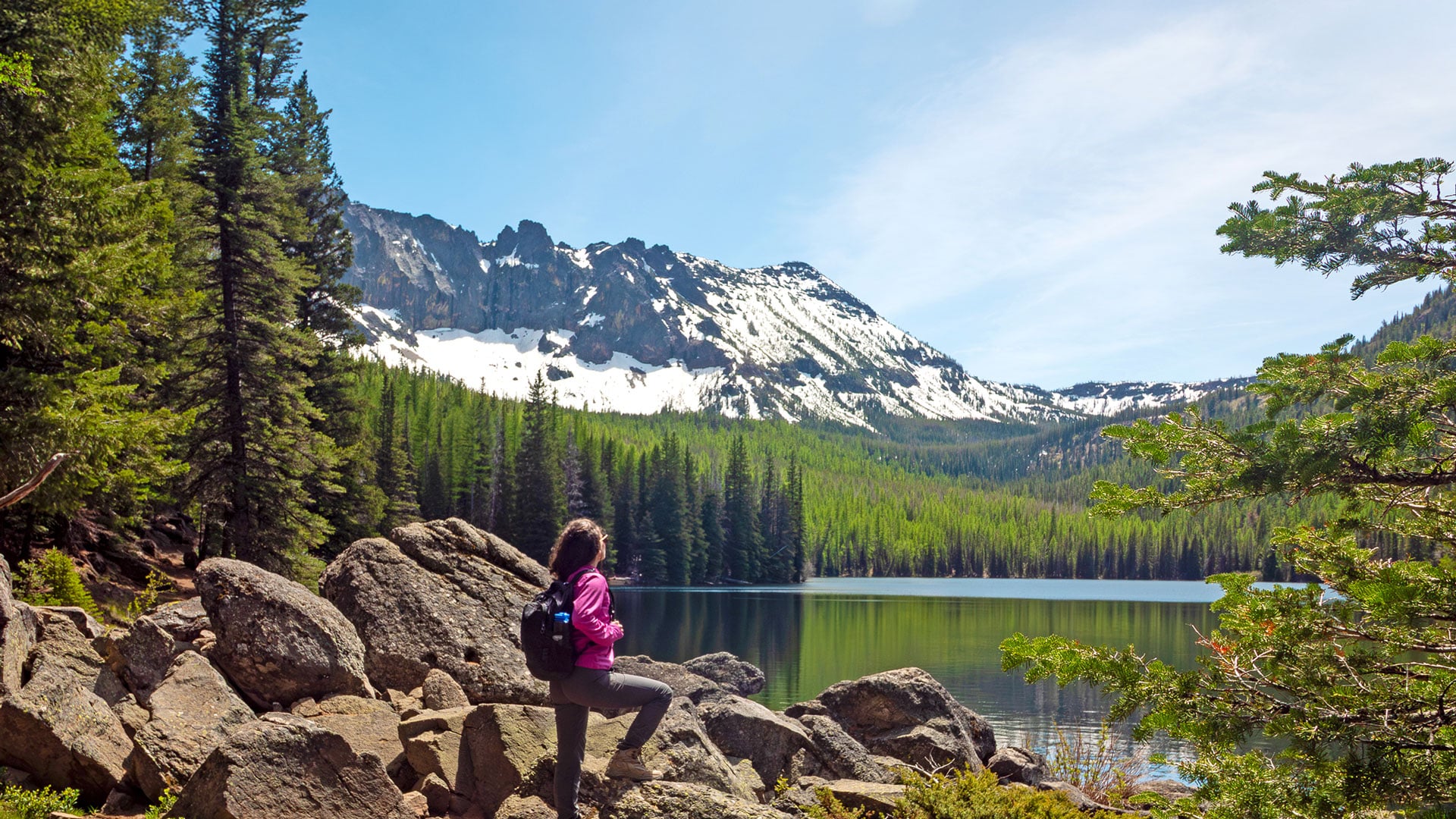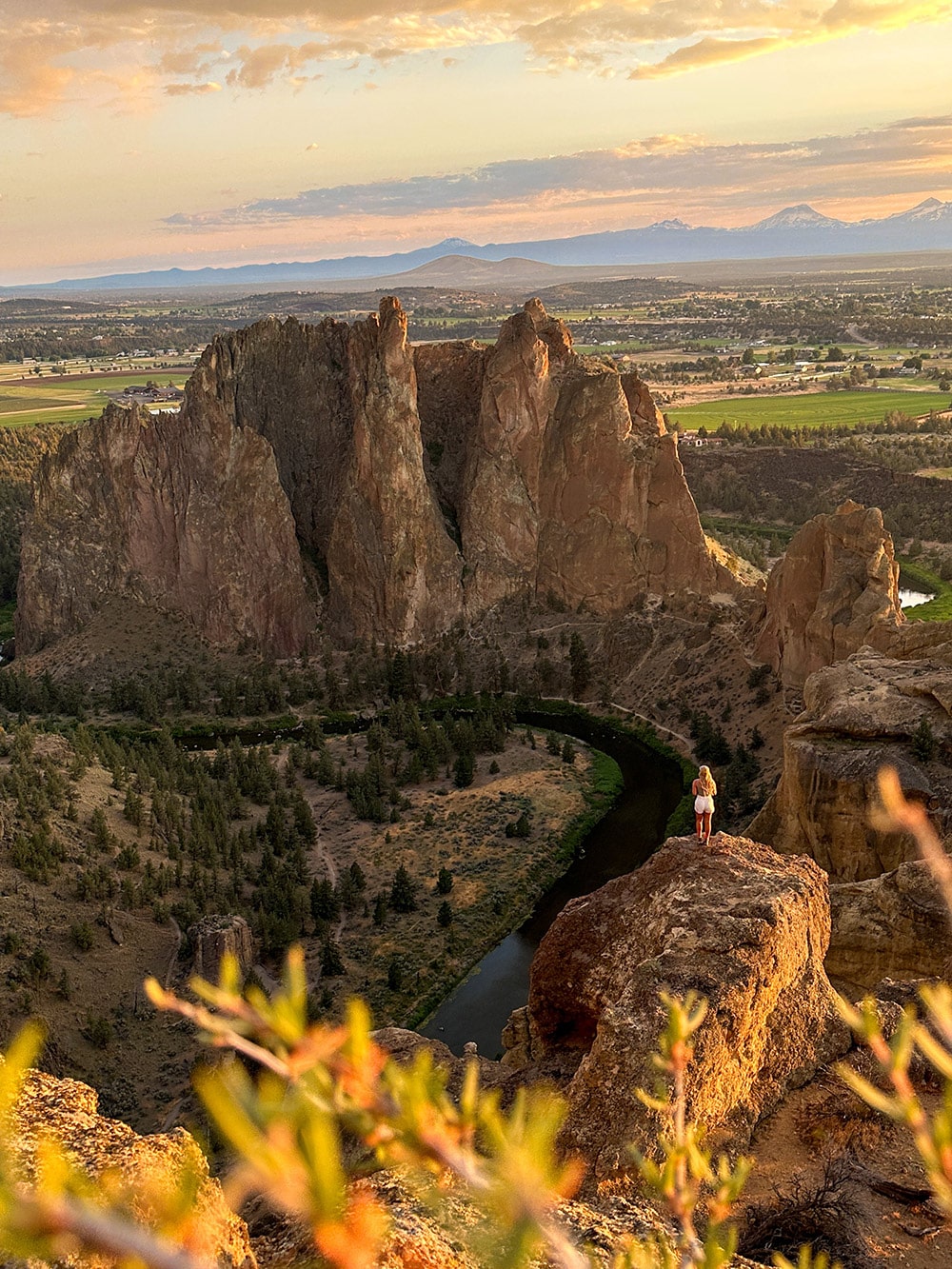Hike a Segment of the PCT in Central Oregon
In the thru-hiking community, Oregon gets a bad rap. Nicknamed the Green Tunnel by Pacific Crest Trail hikers, Oregon is known for having repetitive, wooded scenery and hordes of mosquitoes. The bug problem held true, but the five days I spent on trail were anything but boring.
The PCT spans 2,650 miles of wilderness from Mexico to Canada and can be traveled in many months as a thru-hike, but many break it up into smaller section hikes. I would be hiking a miniscule 65 mile section, but the trip seemed daunting and not entirely appealing.
My dad had been dreaming of thru-hiking the entire PCT for years. But, I had never shared his dream. I couldn’t imagine the appeal of hiking every day for months, of sleeping on the ground, eating freeze-dried food and going so long without a shower that you can hardly stand your own stench. When my dad shared photos and stories from his thru-hiking adventures each summer, I would just shake my head and smile in amusement at his overgrown beard, dirt caked legs and dorky trail lingo.
I grew up backpacking in Mount Rainier National Park, and my experience was much closer to glamping than the hardcore expedition that thru-hikers undertake. My sister and I would carry tiny backpacks for our clothes and our parents would sherpa the rest. We’d hike a few miles in, us kids whining and dragging our heels, and my dad hiding gummy worms on the trail to keep us going. We’d camp at a lake or beside a little alpine stream and my sister and I would spend all evening catching frogs. Dinner was always mac and cheese with oreos for dessert. Mornings came with hot chocolate and blueberry bagels.
Until this summer, I was unaccustomed to the type of camping that comes without glitz, glamor and gummy worms, and until a few months ago I was uninterested in learning. But when my dad asked me to join him on trail, I hadn’t seen him in nearly a year and I was missing him and the mountains, so I said “Yes.”
Leading up to the trip I regretted my burst of bravery, but I was too embarrassed to quit, so on the first of July, my dad and I set off from Six Lakes trailhead with 25-pound backpacks weighed down by tents, trail mix and freeze-dried food. For the next few days, I was destined to discover the “hiker trash” lifestyle, a term of endearment in the thru-hiking community and a way of being that my dad proudly subscribes to. I would eat strange meals, wear the same outfit every day and collect a layer of Deet and dirt on my unwashed skin.
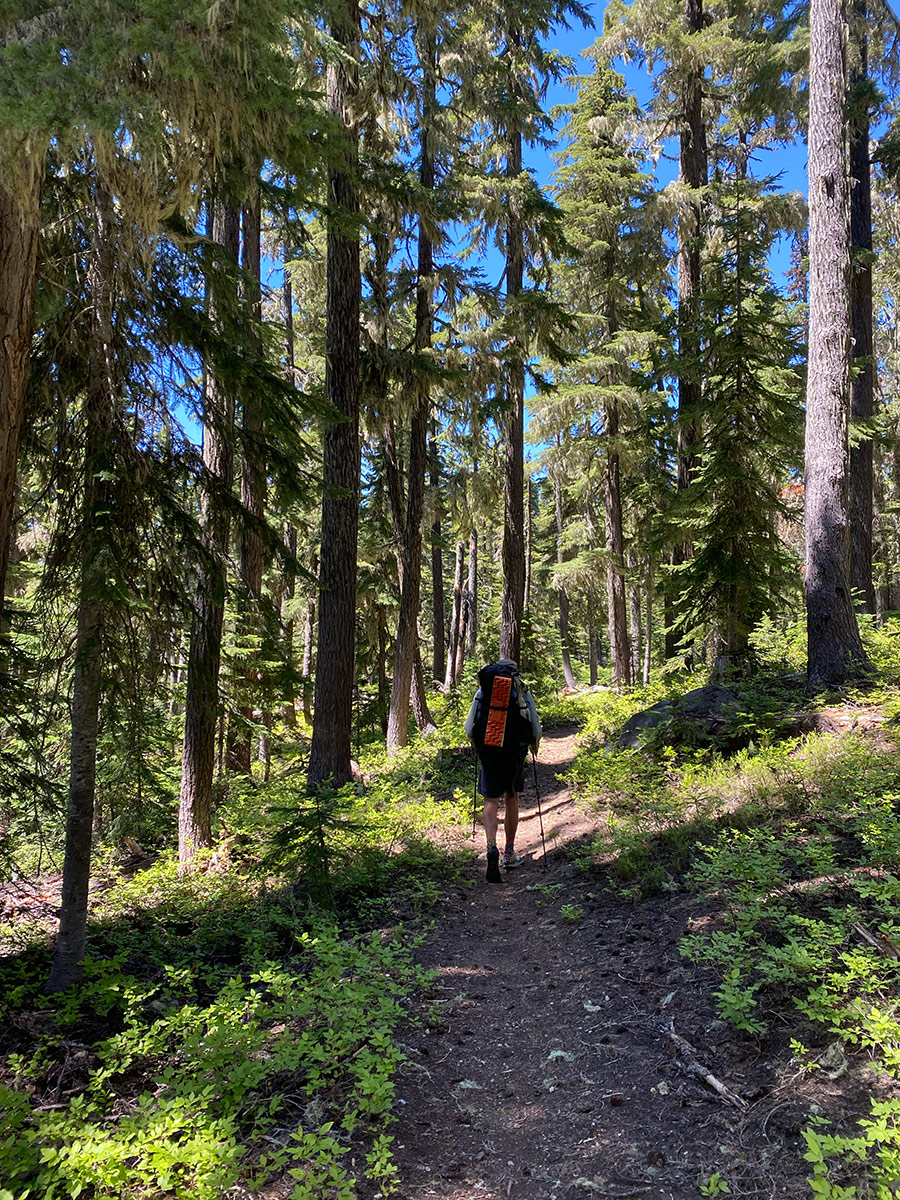
Day One: 15 Miles from Six Lakes Trailhead to Elk Lake
On the first day, we bushwhacked over fallen trees and made our way through burn areas. The bugs were thick in the air, and I was failing to find beauty in my stark surroundings. For the first six miles I battled the question that had been in my head all week. “Why am I doing this?” But around noon, when we plopped down to eat lunch on a plot of burnt dirt a few feet off the trail, I noticed the silence for the first time — the perfect, head-clearing silence of the trail. I was accountable to no one and responsible for nothing but putting one foot in front of the other and pitching my tent at the end of the night.
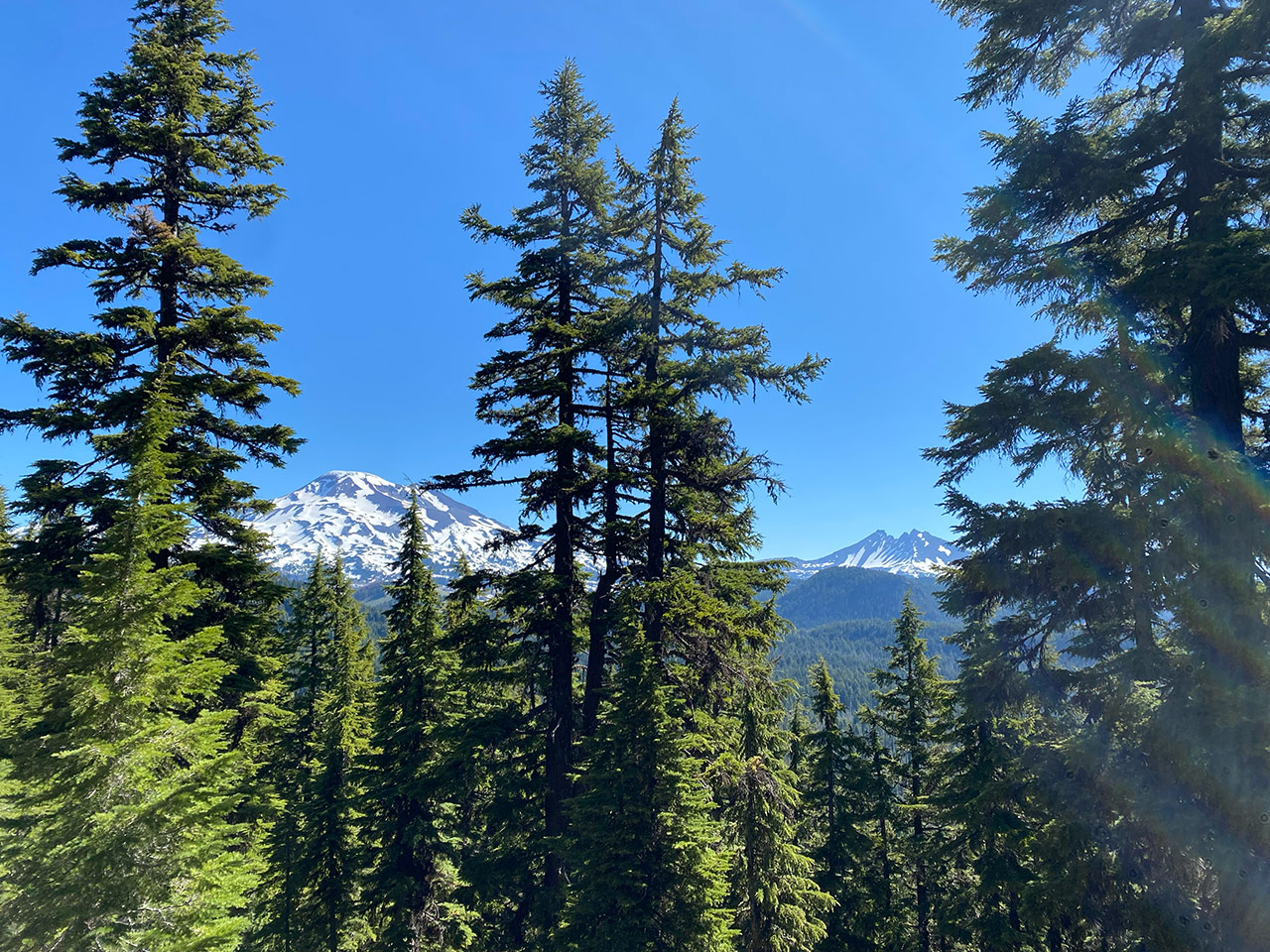
“Don’t you love how quiet it is,” my dad said. “These are my favorite moments of thru-hiking — just sitting in silence and observing things.”
I nodded and took another bite of my peanut butter and banana chip burrito. Even eating felt simpler on the trail. We stopped hiking when we were hungry and ate what we wanted out of our food stuff sacks, cramming our mouths with handfuls of trail mix or glopping heaps of peanut butter into tortillas.
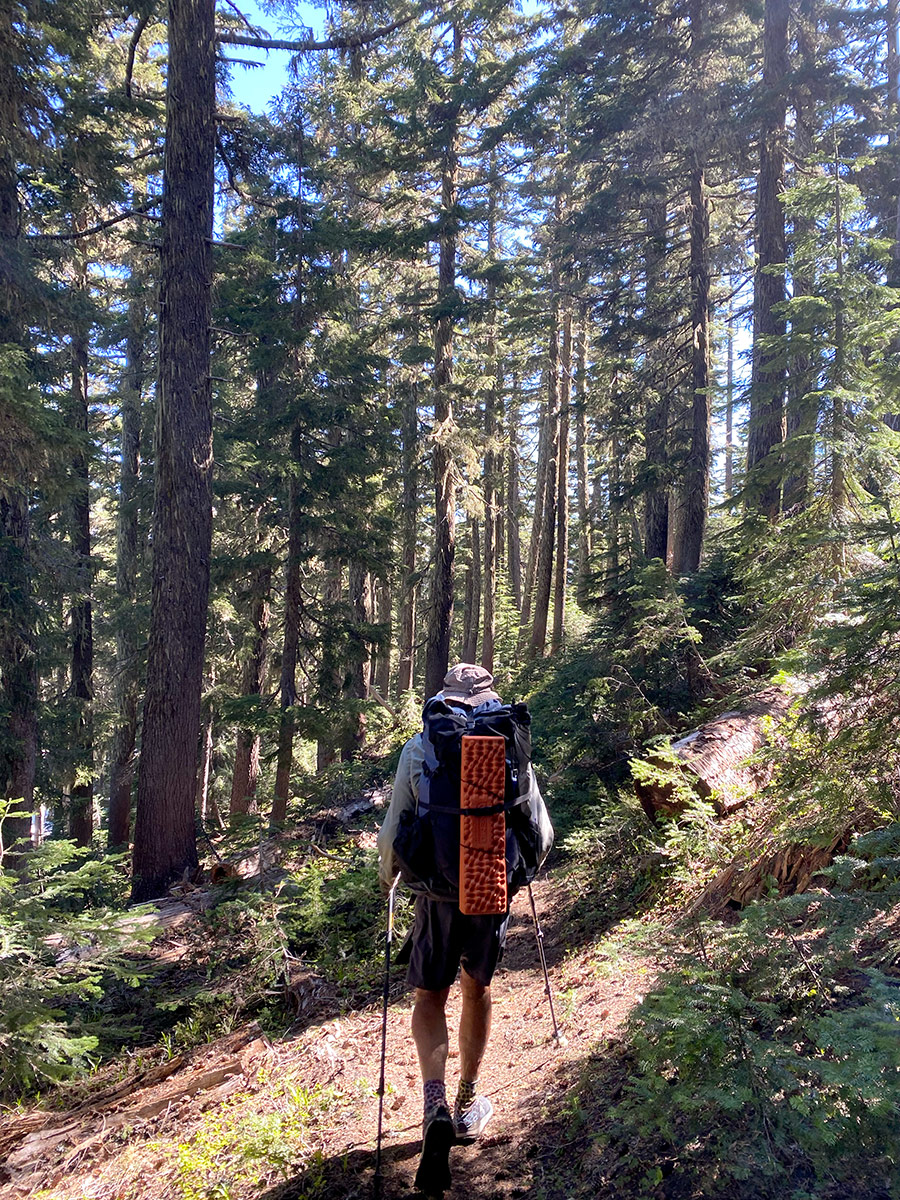
That day we got to know the Green Tunnel and the wildlife that comes with it — mosquitoes. When we stopped to filter water at a small stream crossing the trail, we were ambushed. I had taken off my pack and made myself comfortable on a log when the swarms attacked. Springing up from my seat, I danced around the clearing—pacing and circling just to keep moving. My skin was covered with a thick layer of insect repellant, but my back, bare without my backpack, was vulnerable. In minutes I was covered in angry, red bumps.
As I furiously itched my back on a dead tree, I received my official trail name — a tradition used by thru hikers to identify each other and make the hike a little more fun. From then on I would be Baloo, after the bear from The Jungle Book. I had the song “The Bear Necessities” stuck in my head for the rest of the trip.
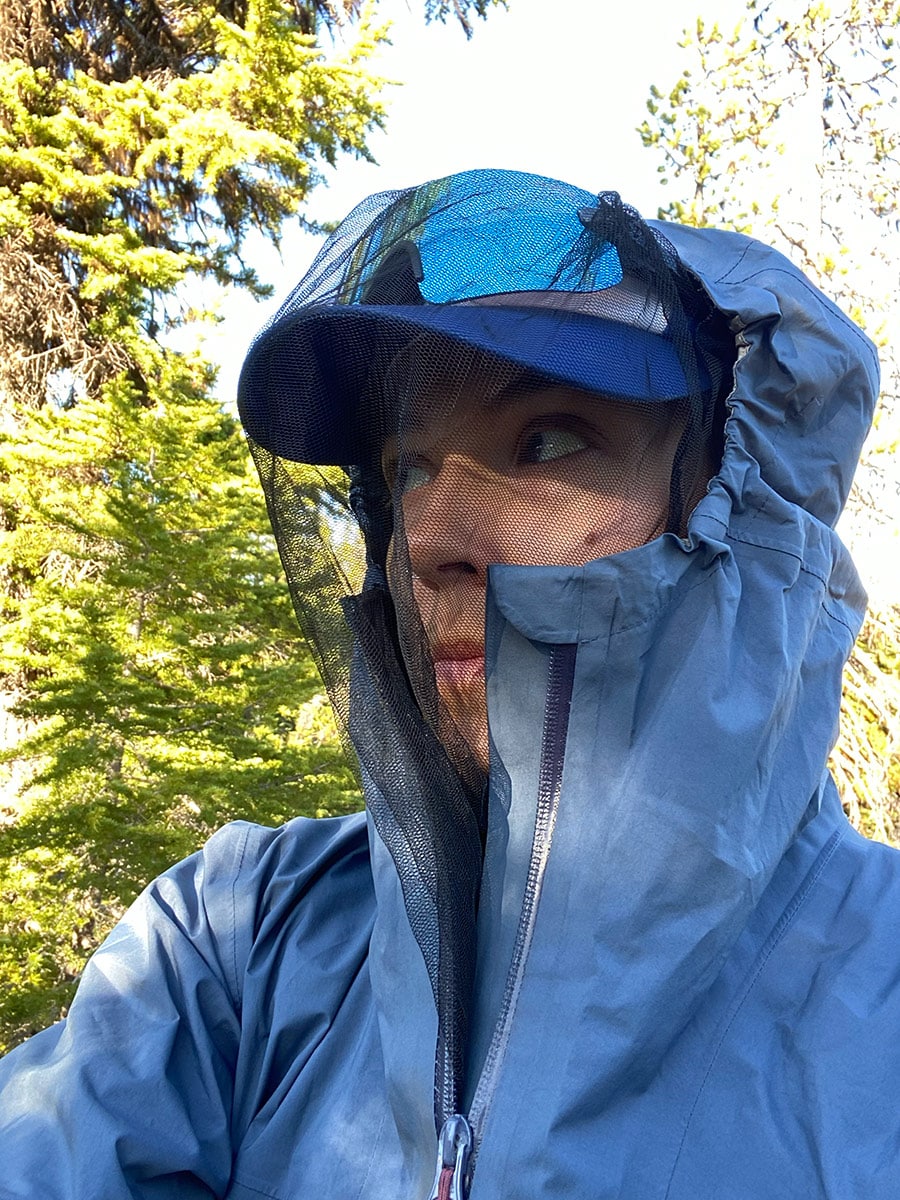
We finished hiking that first day with a view of Mount Bachelor as we finally popped out of the trees. After 15 miles on foot, I was cranky, itchy and tired of walking through burned forest. I spent that evening cowering from the bugs in a full suit of rain gear with a mosquito head net, purchased from REI just days before, draped over my face. By 7 p.m., I was in my tent, staring at the nylon ceiling, feeling pathetic and miserable.
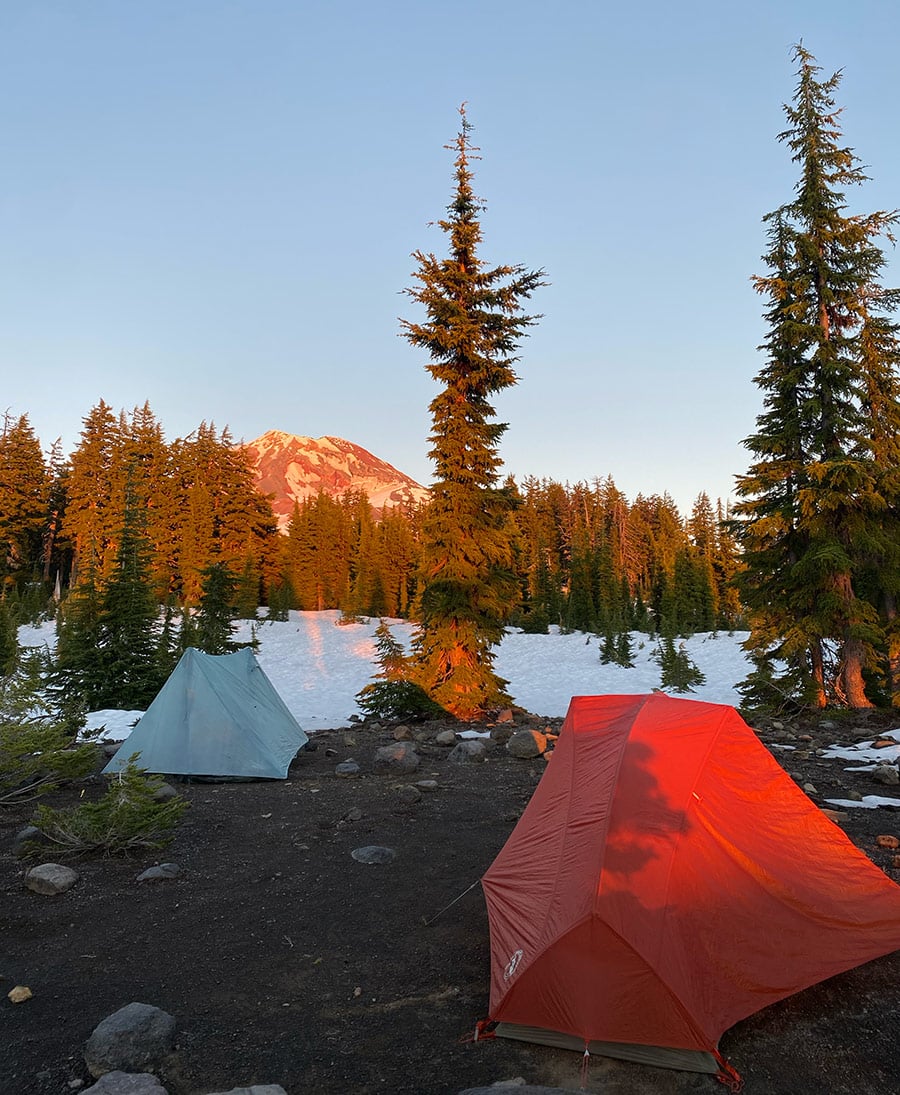
Day Two: 13.73 Miles Around the Backside of South Sister to the Backside of Middle Sister
On the first day, I was bored, trudging through a tunnel of trees just a few miles from Cascade Lakes Highway. It felt too close to home, and when I turned my phone off airplane mode that night, I discovered that I still had service. I could feel the tug of emails and tasks nagging at me to get done. But Day Two took us into the wild.
We were into the mountains and off of dry ground as we trekked across snowfields at the base of South Sister. We lost the trail frequently as it disappeared below the snowpack into the forest, and my dad had to redirect us back on track every few minutes with his FarOut GPS app (the lifeline of our trip).

When we grew tired of checking our location on the phone every few minutes, we decided to place full faith in the faint footprints in the snow. When the footprints kept leading us straight back to the trail, we named the owners of the prints “Smart People.” We met the Smart People a few miles later and ended up setting up camp within earshot of them, a certain comfort when you’re in the middle of the woods.
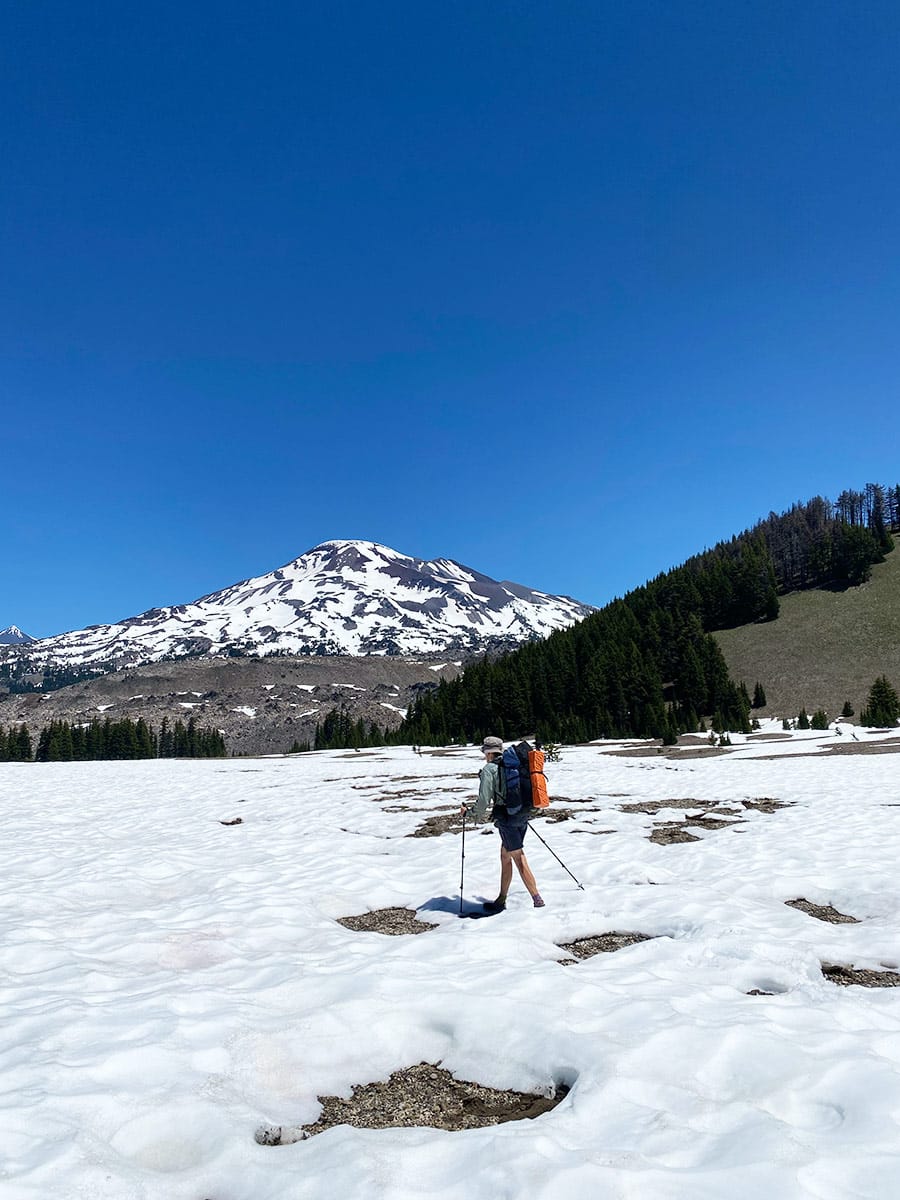
The bugs at campsite number two proved to be even worse than the night before so I retreated to my tent for the evening. Our campsite that night was by far the most scenic, and I pitched my tent without the rain fly so I could peer out at the Three Sisters and The Husband glowing pink as the sun set.
“I honestly don’t remember the last time I had this little to do,” I said as I stared at the mountains. We were far from service and that day I had felt the relief of being truly detached. The only thing on the agenda for the rest of the night was to eat and sleep.
“Isn’t it glorious?” my dad said, and I smiled.
“Yeah, it’s pretty amazing.”
As we prepared dinner that evening, we met Ducky, the only PCT thru hiker I would encounter on my trip. He had followed our tracks to find the trail, leading him right to our tent site. Averaging 30 miles a day, he was soon far ahead of us, and we became his number one fans as we followed his footprints for the rest of the trip.
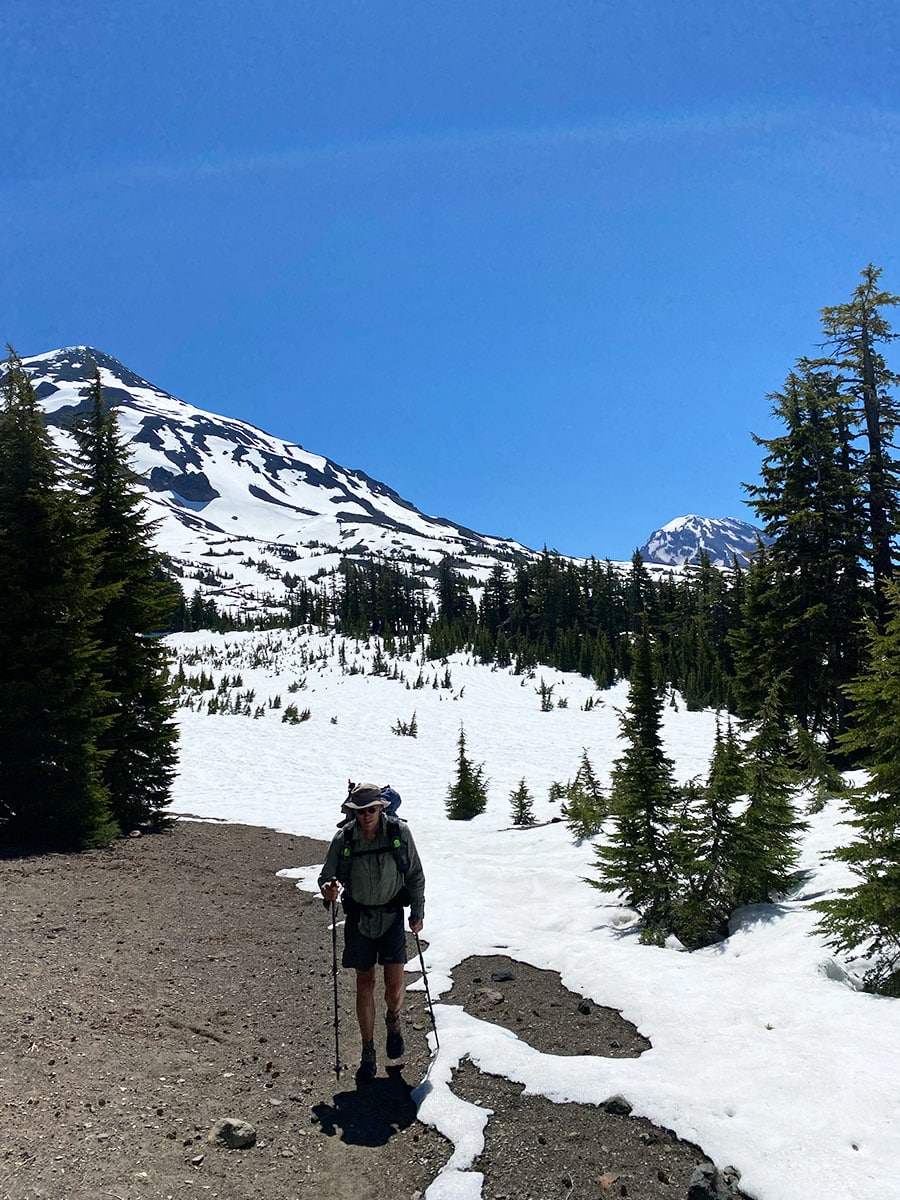
Day Three: 12.36 Miles Around the Middle and North Sister and Over Opie Dilldock Pass
Night two was freezing, and the trail had transformed into a treacherous ice rink the next morning. Hiking was slow going, and we traversed the snow-covered slopes cautiously. I had forgotten my trekking poles at home so we were sharing my dad’s pair, white-knuckling the handles and kicking our feet into the hill for stability.
“That’s what dads are for,” my dad said when I asked if he was sure he didn’t need both.
We barely laid eyes on the trail all day, and 12 miles felt like 20 with all of the detours and retracing of our steps. Our only solace was our friend Ducky and the footprints he left in the snow for us to follow.
“Look, Ducky prints!” I would call out each time I saw the distinct Duck-like outline of his hiking shoes that we surmised earned him his trail name.
In the afternoon we reached dry ground and began the ascent up Opie Dilldock Pass. The trail faded from a distinct dirt path into a faint groove in a field of craggy lava rocks. Dramatic switchbacks were etched into the steep wall of rock. While I huffed and puffed to the top, the narrow rock canyon opened up to a stunning view of North Sister.
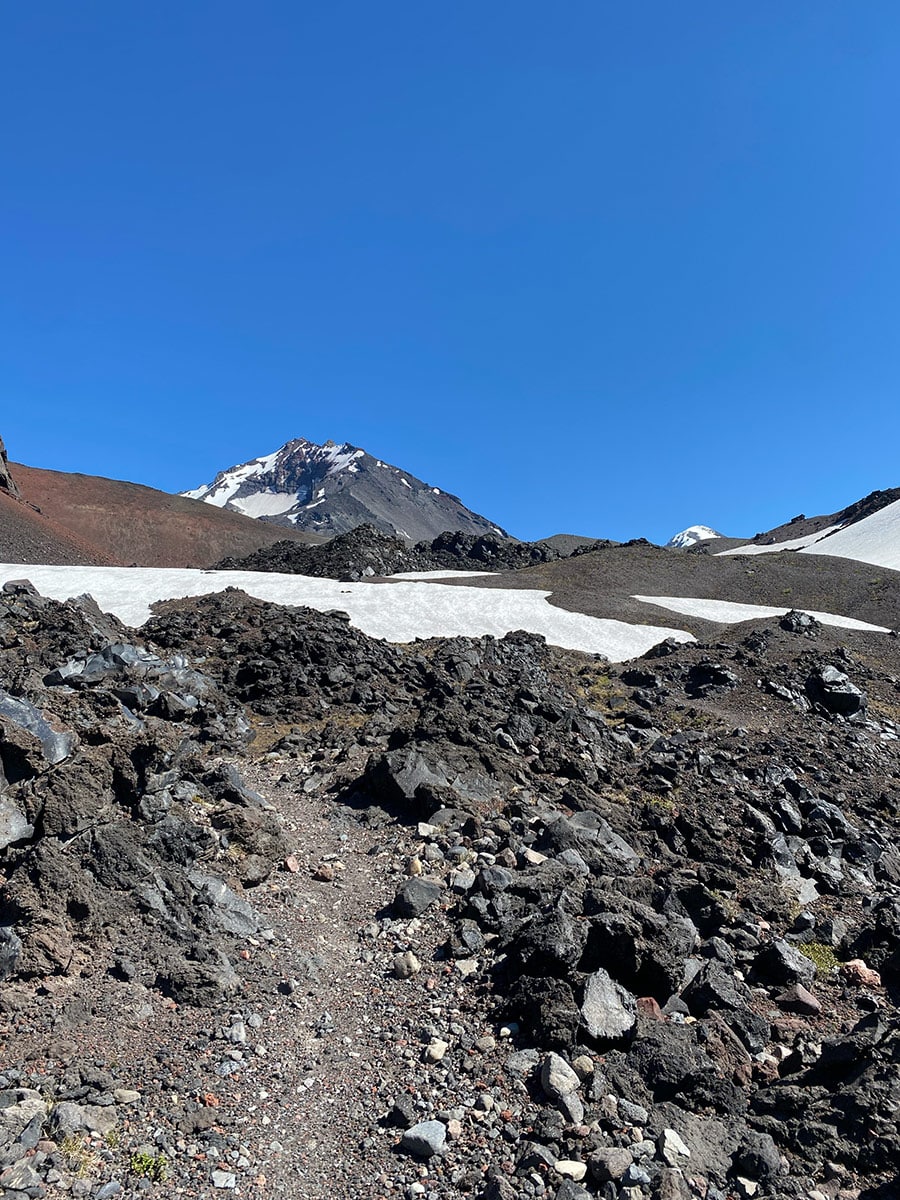
We had been so focused on finding the trail all day I had almost lost sight of the majesty surrounding us. But standing on an endless lava field, the Three Sisters looming grand and quiet above me, I was reminded how small we are on this earth. My problems and stresses shrunk to nothing and it was just so quiet.
When we descended over the other side of the pass, the trail vanished under a snow drift, and my moment of perspective along with it. We followed along the groove of the drift towards the wall of lava ahead, assuming the trail was below us. But when we reached the wall, there was no trace of the trail.
There was only one reasonable route…down. I boot-skied the first snow field, a steep slope with a big cornice at the top. My dad sat and sledded down on nothing but his shorts and skin. At the second snow field, he was complaining about a snow rash, and I had a brilliant idea. My eyes glinted mischievously as I pointed to the foam sleeping pads strapped to our packs. Seconds later we were screaming and sliding on our makeshift sleds.
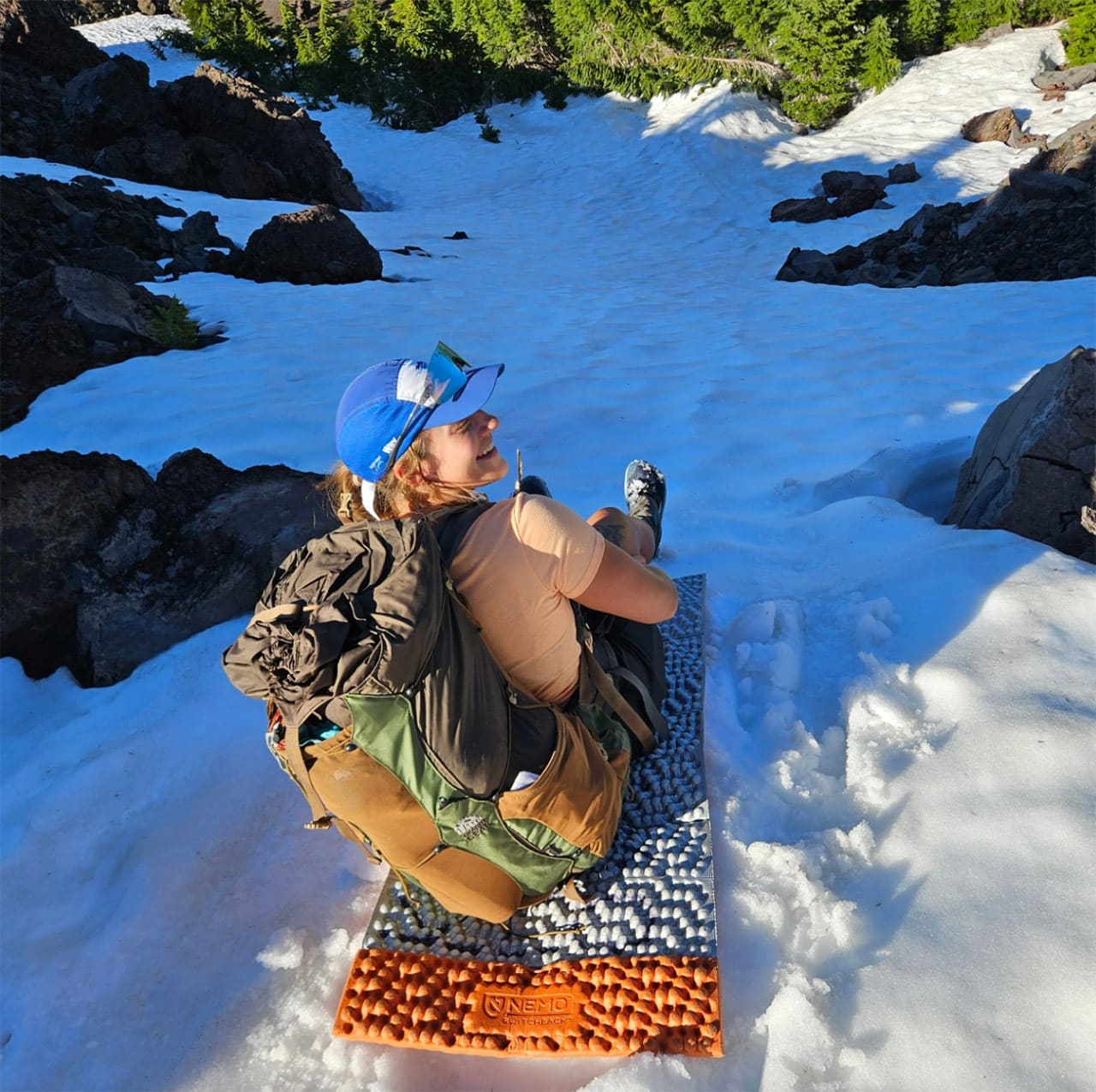
One more heavy-footed mile of hiking and we made it to our camp, pitching our tents on a hill above a lake with a view of North Sister. That night we slept like the dead, drifting off before the sun set and waking after it rose.
Day Four: 16.7 Miles Across Mckenzie Pass and Past Mount Washington to Big Lake Youth Camp
As we headed out of camp, we came across “Dog Father,” a section hiker from Eugene. He was still in bed, which he told us is because he likes to hike late and sleep in. My dad got a good kick out of that one. Hardly anyone on the trail stays up past the hiker’s midnight of 9 p.m.
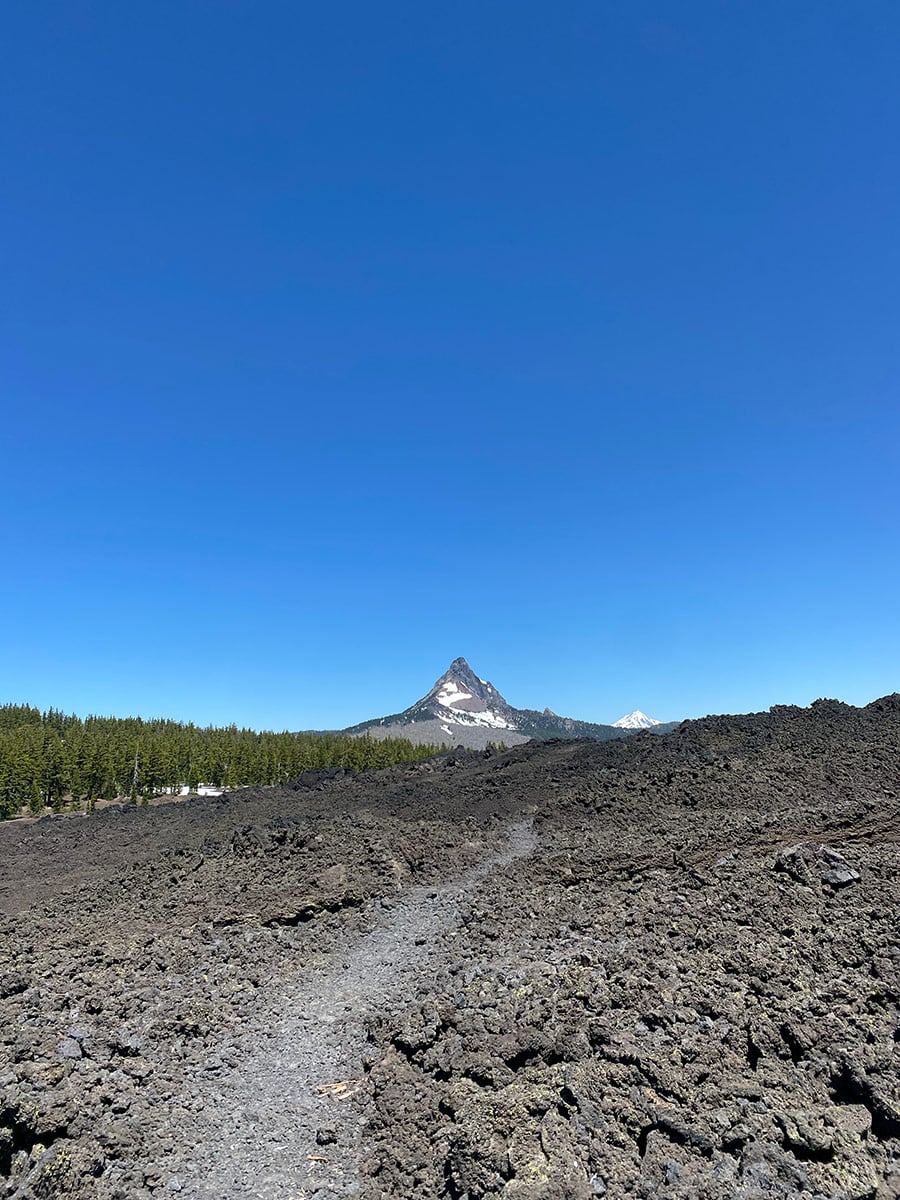
That day was the hottest on the trail so far and we were surrounded by black lava rock. When we realized we were nine miles from our next water source, I had less than 10 ounces of water left and my dad didn’t have much more.
“This is the real PCT experience,” my dad said.
Just a mile later we had found a patch of snow and were packing it into a water bladder. Not two minutes later we ran into a day hiker who was happy to fill our bottles with his remaining water supply. Pacific Crest Trail hikers call moments like these Trail Magic, and the people who help them along the way are known as Trail Angels. We had just met our very own angel. We were set.
The next few miles of the hike were impossibly hot as we hobbled over lava rocks on a steep incline. The only signs of life were tiny purple flowers hiding in the rocks. We were either silent or deep in conversation. He told me stories from his childhood and I giggled about how different it was from mine.
Our destination for the night was Big Lake Youth Camp, a place known for its hospitality to thru hikers. When we arrived at the camp’s PCT center we found a full kitchen, bathrooms, cell service and a complimentary dinner. My dad was grateful for the glimpse of civilization, as he would be on trail for the next few days, but I was disappointed by my early reintroduction to the real world.
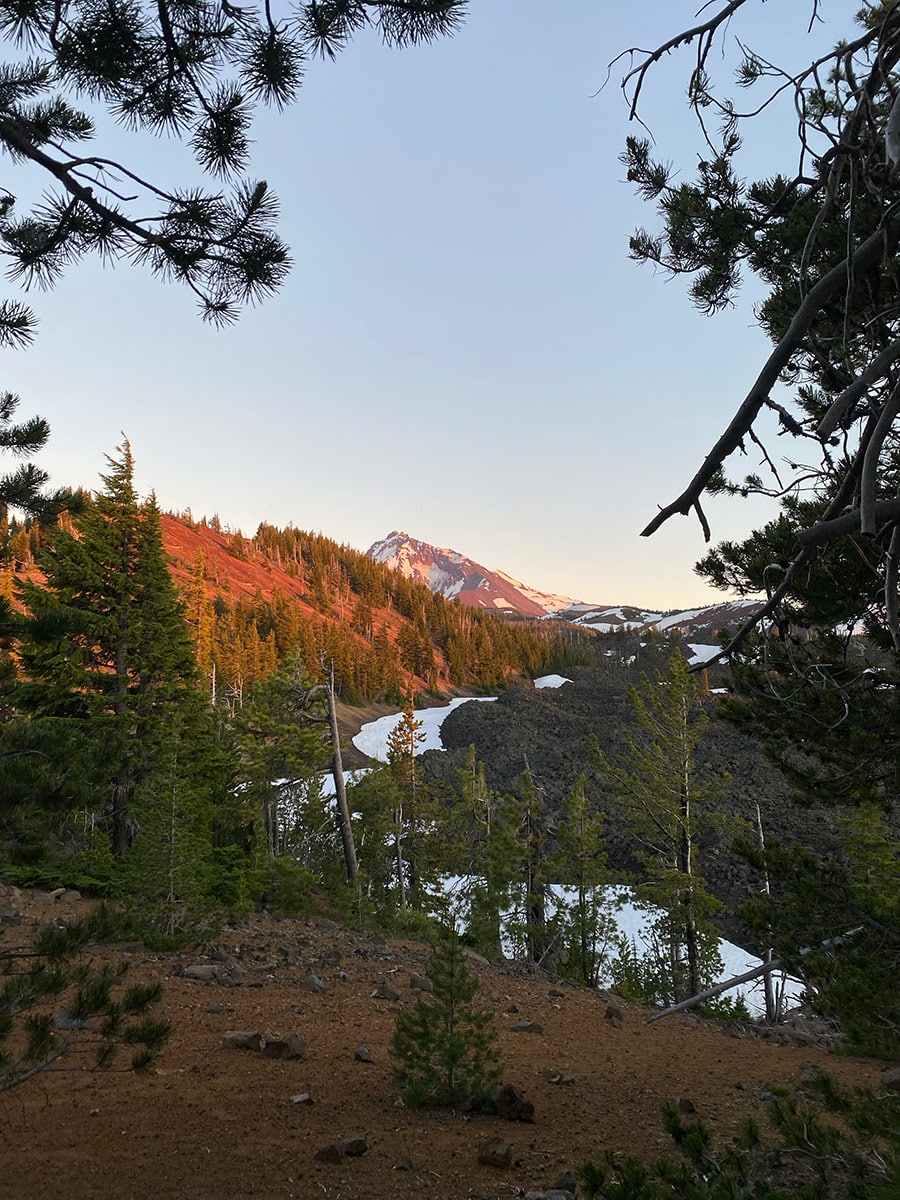
I wasn’t ready to get off trail, to return to the stresses of real life. I was perfectly content being disconnected in the middle of the woods, so I kept my phone on airplane mode and remained in my happy quiet bubble. The real world would have to wait until tomorrow.
Day Five: 5.12 Miles From Big Lake Youth Camp to Santiam Pass Through Swarms of Mosquitoes
Setting off that morning, the magic of the trail was behind us and a thick swarm of mosquitoes was ahead. We speed-walked the first three miles, but when we lost the bugs our pace slowed and we fell into the same conversation we had been having all week — how much we enjoyed being unplugged and how little we wished to return to real life.
Life had become so simple on the trail. The only thing we had to worry about was walking enough, eating enough and finding a flat piece of ground to pitch our tents at the end of the day. The exhaustion from hiking all day calmed me and the mountains looming above humbled me. I was battered and blistered, but each time my dad told me he was impressed with me I swelled with pride.
As I entered the last bug free stretch of my time on the PCT, I had become nostalgic and was reluctant to leave it all behind. My dad was crying as he hugged me goodbye.
“You could totally do the whole PCT,” he said proudly.
“Only if you do it with me,” I said.
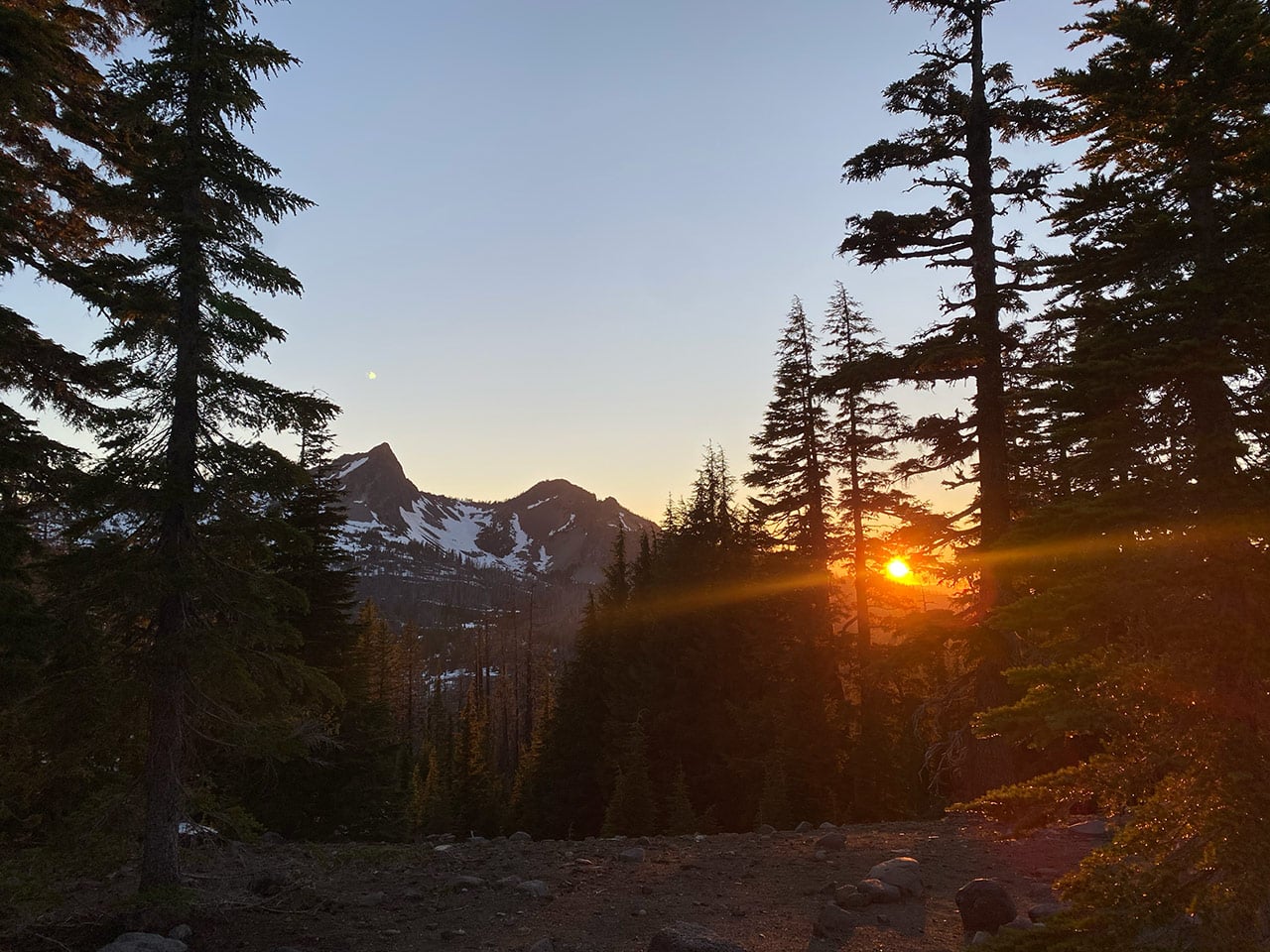
Suggested Gear for a Successful Thru-Hike
Nemo Switchback Ultralight Foam Sleeping Pads are a game changer when it comes to comfort on the trail. Tired of scoping out the perfect spot to sit for lunch? Nemo’s got your back — or more accurately, your butt. Strap one of these pads onto your pack, and suddenly, anywhere is a fine place to dine. Then, at nighttime, it takes on its sleeping pad role to make the ground a comfortable abode.
Sawyer Squeeze Water Filters are a thru-hiker’s most prized possession. Why would you spend precious time pumping water when you could just squeeze? Added bonus: The filter fits perfectly on the mouth of a plastic Smart Water bottle, aka the PCT gold standard for carrying water.
Peak Refuel Freeze-Dried Meals are the ideal end to a big mileage day. Hiker hunger is real, and nothing satisfies a craving for cheeseburgers quite like a hot plastic bag full of rehydrated pasta. After a few days on trail, their Chicken Alfredo could pass as a Michelin star meal.
Altra Lone Peak trail running shoes might look silly on foot, but in terms of luxury, they’re the thru hiker equivalent to Louboutins. Ditch your stereotypical image of a hiker in brown, dusty boots, with trail runners as the new wave of style. These shoes have a durable, spikey tread and are extra wide in the toe box which helps to avoid blisters.
Janji Pace Running Shorts are the ultimate clothing option for my fellow thick-thighed hikers. Chafing is the worst case scenario on long, hot days of hiking, and these shorts have an anti-slide band to prevent it. The side pockets also make for great, easy access phone storage so you can snap a pic on a moment’s notice.
Ben’s 100 Max Formula Insect Repellent is liquid gold. Be warned that this stuff may stain, but it works when you need the strongest defense.
Sea to Summit mosquito head nets are a must for the buggy woods. Worn over a hat, these nets create a safe little bug-free tent for your ears, eyes and mouth so you can at least enjoy the illusion of a bug free hike.
Bend Magazine Tip for Hikers: If you are passing through Sisters, Oregon, make sure to stop at Luckey’s Woodsman. While there, share 1 trail story, and you will receive 1 free drink, plus a Trail Butter (while supplies last). Luckey Woodsman’s mission is to bridge the divide between outdoor recreation and professional food service by offering this trail angel service to any hikers passing by their kitchen in Sisters. How cool is that?!

